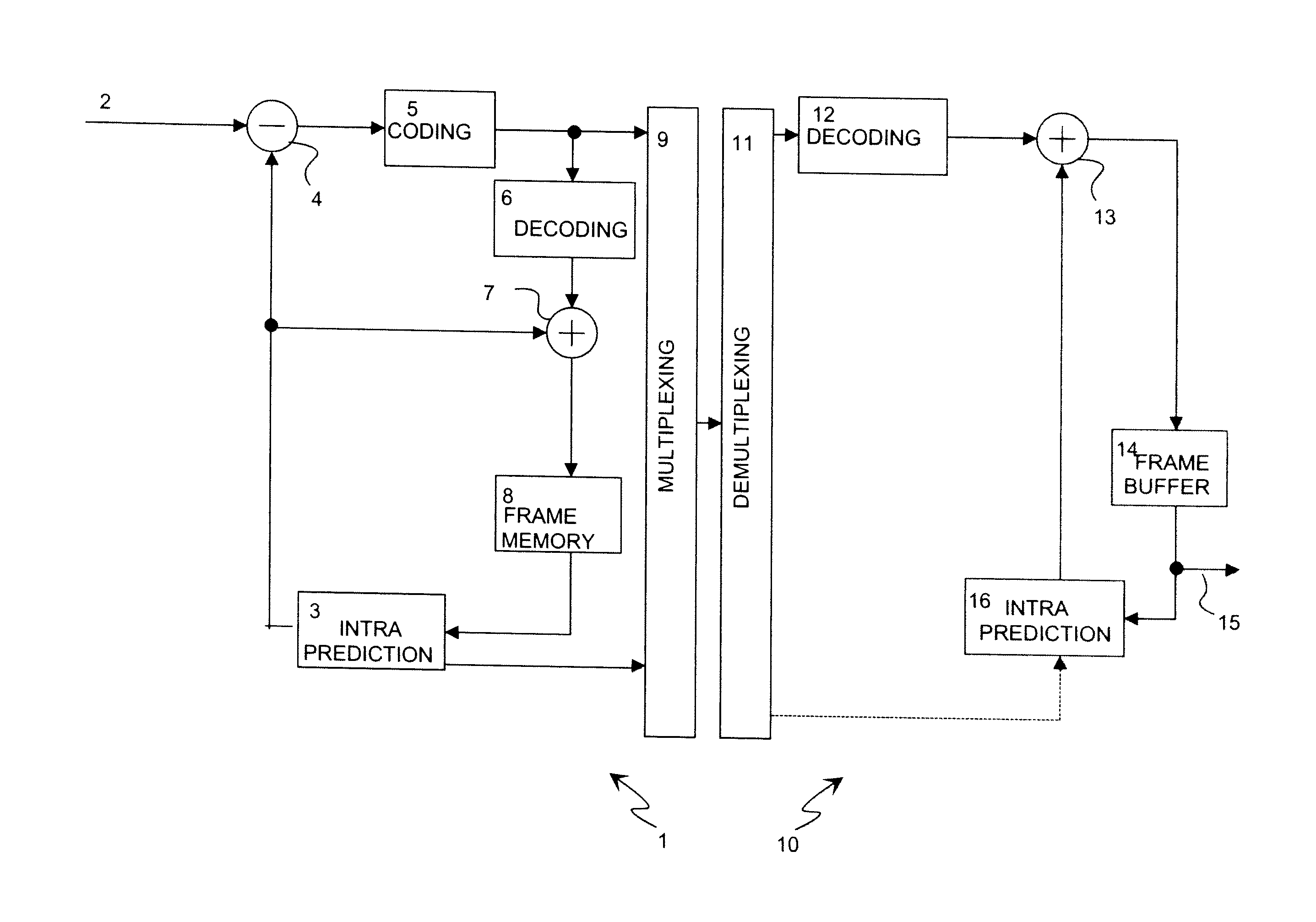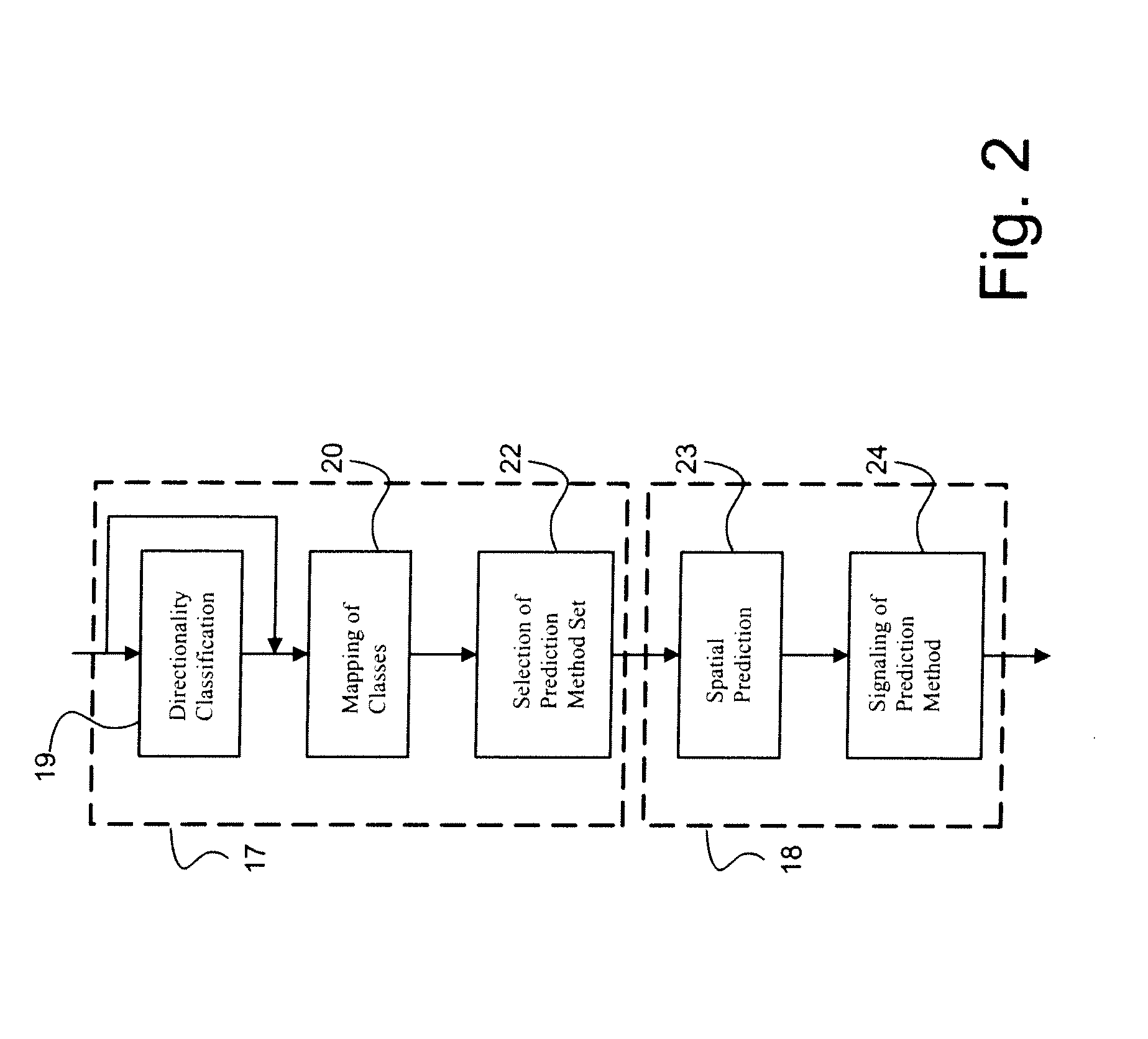Method for Encoding Images, and an Image Coder
a technology of image encoding and image coder, applied in the field of image encoding, can solve the problems of not being able to compose the b-frame, not being able to compress the real-time image, and being unable to achieve the compression effect, so as to improve the encoding and decoding of digital images, improve the encoding efficiency, and improve the bit rate of the encoded digital imag
- Summary
- Abstract
- Description
- Claims
- Application Information
AI Technical Summary
Benefits of technology
Problems solved by technology
Method used
Image
Examples
Embodiment Construction
[0037]The intra-frame prediction method described in this invention operates in a block-based manner and can be applied to image frames that comprise N×M blocks scanned e.g. row by row from left to right and from top to bottom. It is obvious that other scanning directions can also be used in connection with the present invention. Spatial prediction is performed for each intra-coded block using previously reconstructed blocks in the same frame. The residual error can be compressed using any suitable method, e.g. using DCT, as in current standards. It should also be appreciated that the method according to the invention may be applied equally well to both monochrome and colour images.
[0038]The system according to the invention consists of two main parts, as illustrated in FIG. 2. Firstly, context-dependent selection 17 of a suitable subset of prediction methods is performed by classifying neighbouring reconstructed blocks. Secondly, a prediction block is constructed 18 using one of th...
PUM
 Login to View More
Login to View More Abstract
Description
Claims
Application Information
 Login to View More
Login to View More - R&D
- Intellectual Property
- Life Sciences
- Materials
- Tech Scout
- Unparalleled Data Quality
- Higher Quality Content
- 60% Fewer Hallucinations
Browse by: Latest US Patents, China's latest patents, Technical Efficacy Thesaurus, Application Domain, Technology Topic, Popular Technical Reports.
© 2025 PatSnap. All rights reserved.Legal|Privacy policy|Modern Slavery Act Transparency Statement|Sitemap|About US| Contact US: help@patsnap.com



